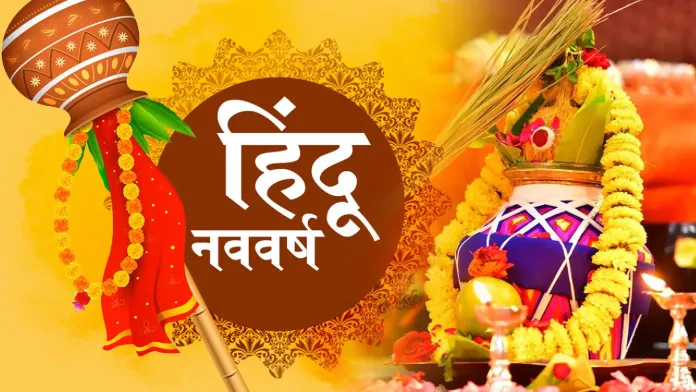Dr. Shameekumar and Sunil Kumar D
New Year’s Day (1 January 2024) is an annual celebration of the English New Year and is the first day of the year in the Gregorian calendar. It is observed all around the world. New Year’s traditions around the world differ from country to country, but people generally spend the day with their families eating traditional New Year’s dishes and saying “Happy New year” for it is the begging of the New Year. Most people think of New Year’s Day in almost wholly secular terms but sadly, it is best known for excessive drinking and rather loud parties.
Why is January 1st so important?
The date was chosen in honor of Janus, the Roman god of beginnings, Though medieval Christians attempted to replace January 1 with more religiously significant dates, Pope Gregory XIII created a revised calendar that officially established January 1 as New Year’s Day in 1582
Why is New Year’s important?
In modern society, New Year’s Day is when people remember their past year’s achievements, failures, and look forward to the New Year to come in, setting resolutions to work towards personal development and seeing it as the start of a new beginning
What is the Hindu view of New Year?
The Hindu New Year is based on the lunisolar calendar, which is directly related to how the human body is built. The Bharatyacalendar is significant not only culturally, but also scientifically, because it connects you to the planet’s movements.
There are numerous days throughout the year celebrated as New Year’s Day in the different regions of Bharat because the observance is determined based on lunisolar calendar. Those regions which follow the Solar calendar, the new year falls as Baisakhi in Punjab, Bohag Bihu in Assam, Puthandu in Tamil Nadu, Vishu in Kerala, Pana Sankranti or Odia Nababarsa in Odisha and Poila Boishakh in Bengal in the month of Vaishakha that is on 14th or 15th of the month of April. Even in Burma, Cambodia, Sri Lanka, and Thailand New Year is celebrated on the same day. Those following lunar calendar consider the month of Chaitra (March-April) as the first month of the year and, the New Year is celebrated on the first day of this month, as Ugadi in Andhra Pradesh, Telangana, Karnataka and Gudi Padwa in Maharashtra. In Bharat, some regions consider the period between consecutive Sankarantis as one month and, some others take the period between consecutive Purnimas as a month. In Gujarat, the New Year is celebrated on Shukla Paksha Pratipada, in the Hindu month of Kartik, the day after Diwali while in other parts of Bharat; New Year Celebrations begin in the spring.
What happens in Hindu New Year?
Millions of Hindus worldwide celebrate Hindu New Year or Vikram Samvat, every year, on 22nd March. The day signifies new beginnings and is considered an auspicious time to launch new ventures. The day is celebrated with great vigor and enthusiasm and offers people a renewed sense of optimism
Most of the Hindu festivals and rituals have some significance with science and nature, and the New Year’s celebration is no exception as it is considered as one of the harvest festivals. Although the celebration during the harvest is universal and celebrated differently in many parts of the world. Likewise, in Bharat, it is celebrated in various forms across the nation. Most Hindus celebrate New Year on first day of the month of Chaitra, the first month of the Sanskrit calendar (beginning March-April), which is coincides with the first day of spring that signifies “the season of new beginning” with new blossoms after slumber in the winter. Similarly, we are also expected to shed our sorrows and failures and start a life with new beginnings. Thus, it is a perfect time to celebrate the New Year along with nature. The word Utsava (or celebration) in Sanskrit means “removal of worldly sorrow or grief.”
Millions of Hindus worldwide celebrate Hindu New Year or Vikram Samvat every year in March. The day signifies new beginnings and is considered an auspicious time to launch new ventures in life. The day is celebrated with great vigor and enthusiasm and offers people a renewed sense of optimism.
Some of the common practices on Hindu New Year are:
1) Starting the day at dawn.
2) Cleaning the home.
3) Decorating the home with Rangoli, marigold flowers and mango leaves.
4) Wearing new clothes.
5) Performing puja at home or temple.
6) Seeking blessings from elders at home and temple priests.
7) Giving gifts or money to younger members after they touch the feet of elders.
8) Visiting the temple to worship and seeking the blessing of the Almighty.
9) Offering money, gifts, and new farm produce to the deity.
10) Exchanging sweets and gifts with family and friends.
11) Having an elaborate feast with family and friends.
12) Participating in gatherings for singing devotional songs (Bhajan and Kirtan) in the late afternoon or early evening.
There is a common practice among South Indians to eat Bevu Bella or Pachhadi, a snack made of different ingredients having six tastes signifying that the life is a melody of all sort of experiences and guide us to accept and respect ‘the life’ in every form. These tastes are as following
- Neem – tender leaves or flowers for bitterness, indicating “sadness”
- Jaggery and ripe banana for sweetness, indicating “sweetness”
- Green chili for a hot taste, indicating “anger”
- Salt for saltiness, indicating “fear”
- Tamarind juice for sourness, indicating “disgust”
- Raw mango for tanginess, indicating “surprise.”
The New Year’s day starts by viewing the mages of family deities, tray containing auspicious things such as gold, silver, jewelry, and new clothes, the new calendar, a mirror, rice, coconuts, fruits, vegetables, betel leaves, and other fresh farm products during this time.







